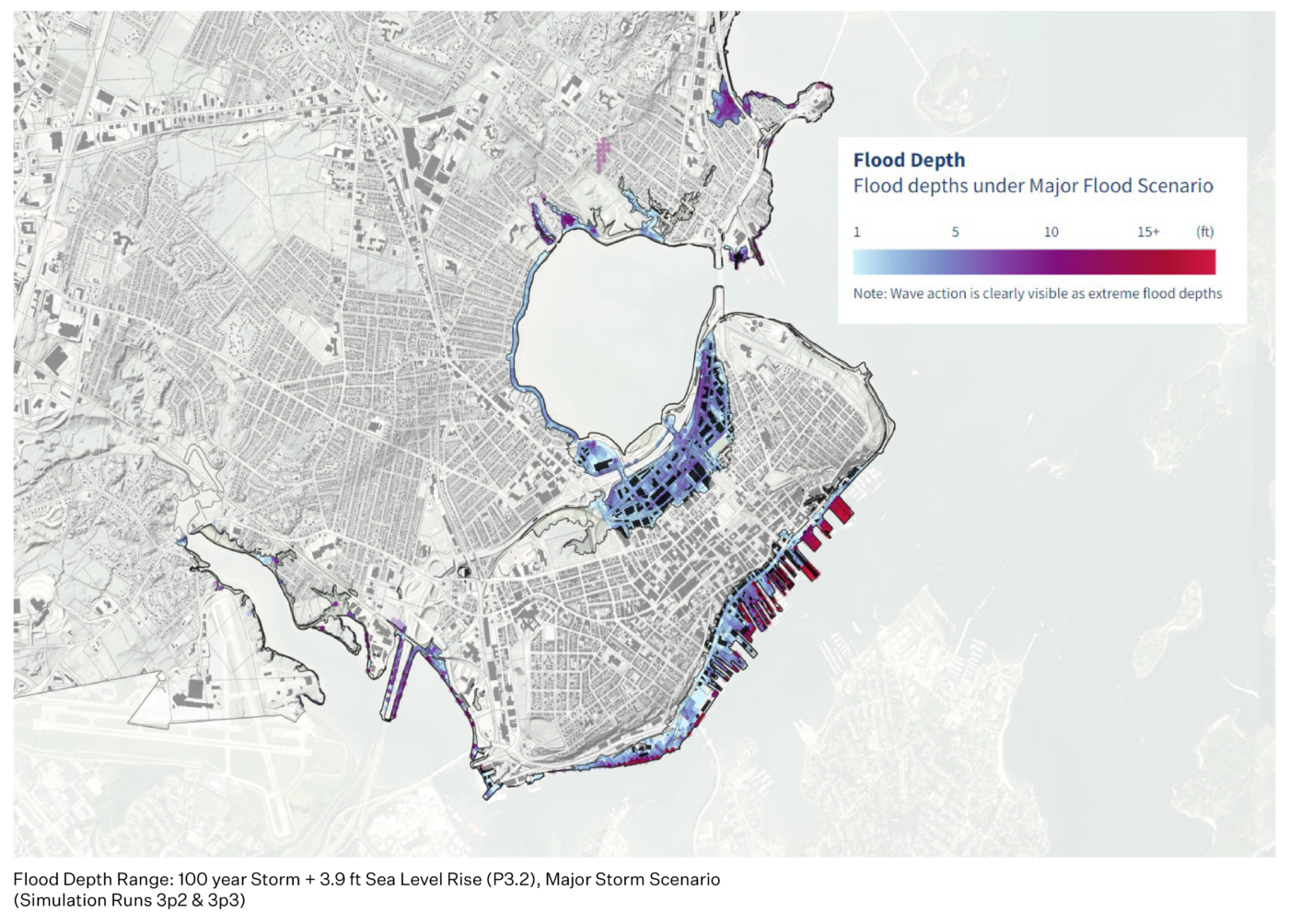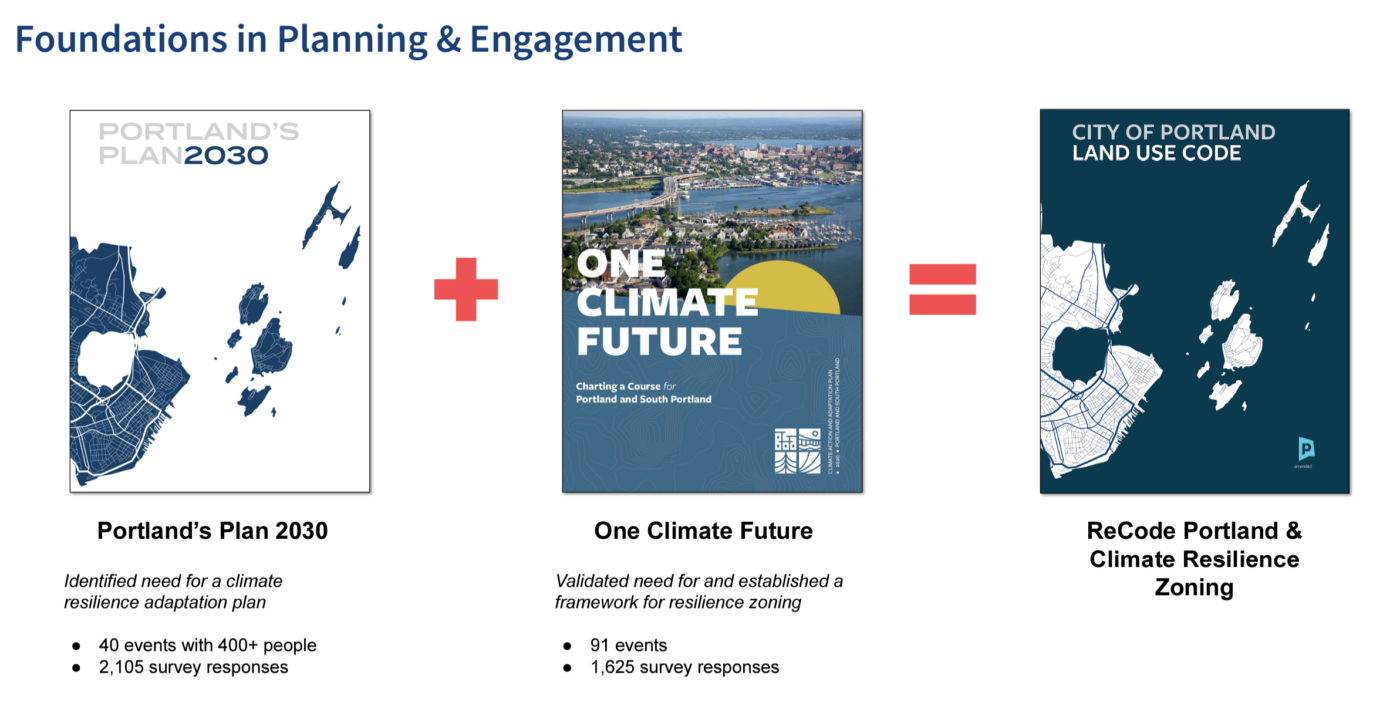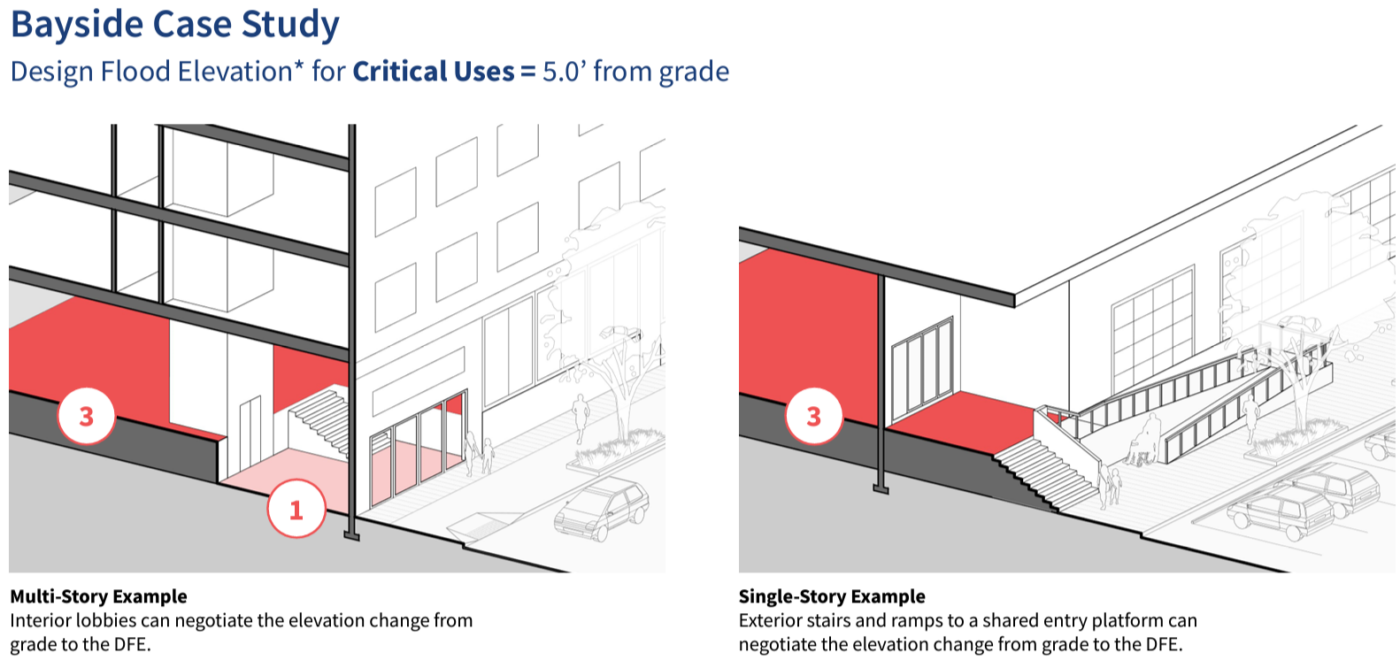Recode Portland: Resilience Planning
Utile was engaged by the the City of Portland to develop a new zoning ordinance to address coastal flooding, stormwater management and urban heat islands. The effort implements recommendations made in the City’s Climate Action Plan, One Climate Future, and aligns with a broader city-wide rewrite of the zoning ordinances, ReCode Portland. The City’s goals were to use land-use policy and regulations as part of a broader suite of initiatives to mitigate the increasing impacts of coastal storms due to sea- level rise, as well as city-wide risks associated with higher intensity rainstorms and high heat. The overall effort focused on developing policies that are highly specific to Portland’s hydrology, urban fabric, development patterns, and underlying land use regulations.
Building off of a hydrodynamic flood model provided by the Army Corps of Engineers, Utile identified an overlay district based on projected flood vulnerability in 2100. Because the land use patterns and flood characteristics vary so greatly in different portions of the City, Utile developed a tiered system to balance various degrees of risks associated with different uses. The resulting code requires Design Flood Elevations that are proportional to the degree of risk posed to the occupants and the public interest, and exceed those currently required by FEMA. The flood resilience aspect of the work has been codified as a mapped overlay district which may evolve as sea level rise projections are revised.
Stormwater management and urban heat island were addressed city-wide through adaptations of Portland’s existing codes. The revised stormwater policy increases retention specifically on redevelopment sites which had previously been held to a lower standard. Urban heat island was further addressed through tree planting requirements tied to the area of new asphalt, and minimum Solar Reflectance Index ratings for landscape materials and roofs.



